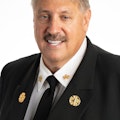I have been writing for Firehouse® Magazine for 15-plus years and I would put this column among the most important I have ever written. The reason it is important is because I am going to predict what could happen to fire service EMS if we look the other way.
History is dotted with examples of what happens to those caught looking the other way. Pearl Harbor is one example. Signs of danger were clear that the Japanese would take some action against the U.S. for imposing an oil boycott. The Japanese were forced to decide between withdrawing from China, negotiating an end to the conflict or going to war to obtain the needed resources. The U.S.was decoding secret diplomatic messages in Washington ,DC, but they never reached the right people. Radar spotted Japanese planes approaching Hawaii, but that was dismissed. A Japanese midget submarine was even sunk just outside the harbor before the attack, but officials looked the other way. The end result was more than 2,300 American lives lost at Pearl Harbor.
The same can be said for the 9/11 attacks. Try reading the 9/11 Commission Report. It reads like a novel, but it clearly details all the warning signs that were there, but the U.S. looked the other way all the way back to when Osama Bin Laden first attacked the country in the early 1990s with bombs at two hotels in Yemen where U.S. troops were staying enroute to Somalia. We continued to look the other way, even when CIA reports showed that Bin Laden was determined to strike the U.S. homeland as early as 1998. Still, the U.S.looked the other way.
I sense the fire service is looking the other way when it comes to the changes that are going to affect healthcare in the U.S.over the next 10 years.
Changes ahead
On May 23, 2010, President Obama signed into law the Patient Protection and Affordable Care Act (PPACA), commonly known as “Obamacare.” The U.S. Supreme Court upheld the law in June 2011 and the re-election of a Democratic president and Democratic control of the Senate in November 2012 ensures the law will go into effect. There will be no Republican in the White House before 2017 at the earliest, when core provisions of the PPACA will have been in effect for three years. Healthcare is going to change as we know it. It is federal law, not voluntary.
The watchdog of these new healthcare systems will be “accountable care organizations” (ACOs) that will not only measure the QUANTITY of what healthcare is delivered, but the QUALITY of the healthcare. ACOs are affiliations of coordinated healthcare organizations that agree to be “accountable for the quality, cost and overall care of Medicare beneficiaries” assigned to them, according to the Centers for Medicare and Medicaid Services. Private insurers are also expected to follow suit through ACOs.
Under this scenario, hospitals could face non-reimbursement or other penalties in cases involving a patient who is readmitted with the same diagnosis. For example, if a patient who was treated at a hospital with congestive heart failure is discharged, then readmitted the next day with the same diagnosis, the hospital could be penalized for the patient admission and treatment.
What will happen when most people are moved under an insurance plan is that their care will be managed by ACOs. ACOs are going to partner with EMS providers to move patients or prevent them going back into a hospital emergency room, where the care can be more expensive than some other medical facility or treatment at home.
There will still be a need for a 9-1-1 system for those who have sudden heart attacks or accidents, but patients with congestive heart failure, diabetes or other chronic illness will be managed and have no need to call 9-1-1. Calls for medical assistance will decrease and I suspect politicians will want to cut fire department budgets accordingly.
Preparing for the future and not looking the other way is American Medical Response (AMR), a private ambulance company. AMR just announced a program called “The AMR Community Paramedic Specialist,” which it touts as “the innovative solution to integrated out-of-hospital care.” According to AMR documents, “The central focus of the AMR Community Paramedic Specialist Program is the use of a specially trained and credentialed paramedic to provide out-of-hospital evaluation and therapy that is tightly integrated with both the acute healthcare system and the patient’s primary care medical home.”
Bottom line – the fire service, the largest provider of EMS in theU.S., will no longer see these patients calling 9-1-1.
It is imperative that fire service EMS transporting agencies begin talking to the healthcare and hospital providers in their communities. The agencies should be looking for opportunities to form partnerships and develop programs that look at non-traditional 9-1-1 response to manage the care of patients in their healthcare systems. A paradigm shift is coming and unless we adjust, 10 years from now we will find ourselves looking the other way and asking what happened.
For more news and training on EMS, visit http://EMSWorld.com/.
GARY LUDWIG, a Firehouse® contributing editor, has 35 years of fire, rescue and EMS experience. He currently serves as a deputy fire chief for the Memphis, TN, Fire Department. Ludwig is also chair of the EMS Section for the International Association of Fire Chiefs. He can be reached through his website at garyludwig.com.
About the Author
Gary Ludwig
GARY LUDWIG has served in three fire departments over his career: St. Louis, Memphis, and Champaign, IL. His fire, EMS and rescue career spanned a total of 46 years, and he has been a paramedic for over 44 years. Ludwig served as president of the International Association of Fire Chiefs in 2019-20. He has a Master’s degree in Business and Management, has written over 500 articles for professional fire and EMS publications and is the author of seven books.
Connect with Gary
Email: [email protected]
Facebook: Gary Ludwig
Twitter: @ChiefGaryLudwig
Website: garyludwig.com
